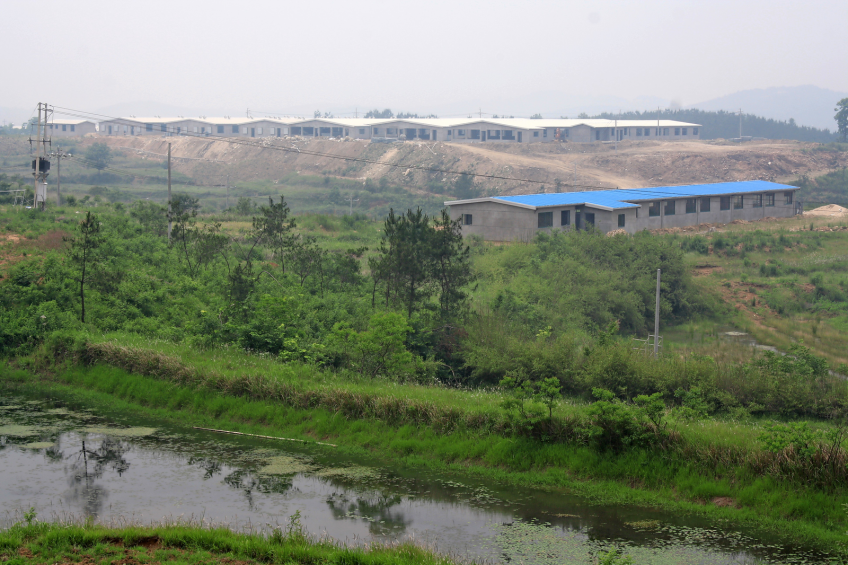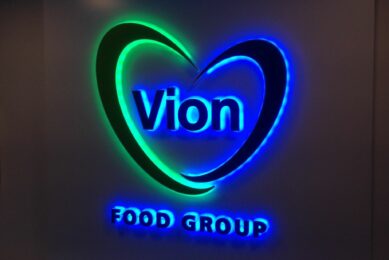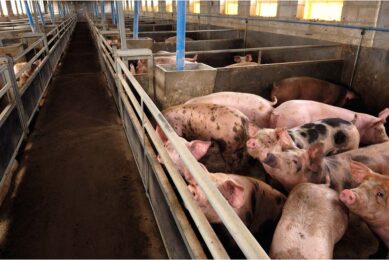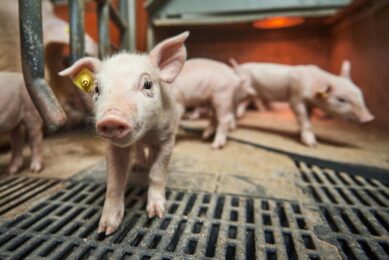Zhengbang aiming to close the technology gap

Pig farm expansion in China is growing at a rate unknown anywhere else. China’s top pig breeder Zhengbang is currently building a complete complex for half a million pigs annually, just north of Wuhan. Pig Progress had a look in its future nucleus facility.
By Vincent ter Beek
As always, figures about China’s swine production dazzle. The Zhengbang Group has only been in existence for 17 years, but is already one of China’s largest swine breeders. Being an expert in ‘agricultural industrialisation’, and headquartered in Nanchang, Jiangxi province, Zhengbang to date owns 20,000 GGP breeding pigs and aims to have 170,000 breeding pigs by 2016, determined to make the most of China’s vast potential. As may be expected, the company is not only in pig production – it also is a major duck breeder, milk producer and rice plant cultivator. In addition, Zhengbang has a financial division. The total holding company currently employs almost 36,000 people.
At this May’s edition of the China Animal Husbandry Exposition (CAHE), in Wuhan, Hubei province, Zhengbang showcased its ‘Genmax’ line – a new pig breeding line launched in September 2012. Zhengbang hopes to close the gap between Chinese and Western breeders with this technology, which is synchronised with the Canadian Centre for Swine Improvement (CCSI) system, and offers several advantages to pork growers. Zhengbang vice president Peng Yubing tells Pig Progress: “The breed ensures fine body and appearance; good reproductive performance; fast piglet growth; and the breed has a strong disease resistance, the piglets are not very susceptible to eg. neonatal diarrhoea.”
The Genmax line, a patented concept, has been developed by scientist Huang Lusheng from Jiangxi Agricultural University, Peng says. Ambitions are high – the breed should become the number one brand in China in five years. Peng adds that the breed may soon be sold abroad – he thinks to the United States, Denmark or Canada.
For now, the breed also needs further distribution inside China, which is why the number of breeding complexes need to grow. Nationwide, the company has 45 nucleus and multiplier farms in eight provinces. Under construction during the most recent CAHE was a project in the district Hong’An, about a 1.5 hour drive north of Wuhan. The five-site conglomerate includes a feed mill, a nucleus farm and three other farms. These are all located several kilometres away from each other. The total projected output in three years from now of the Hong’An project is 500,000 market hogs/ year.
The nucleus facility (main image) is called Zhoujia farm and will eventually house 2,400 GGP breeding sows. Part of the site had already been in use since May 2013, but most buildings on the 344 hectare farm still have to be finished. The farm, costing €9.4 million (RMB 75 million), is located about 4 km off the main road, and surrounded by walls, to keep out unwanted humans or animals. Visitors are welcomed by two yellow buildings to be used for office space as well as dormitories for 60-70 staff. Slightly uphill, is a large water tower that catches your eye. Apart from being an integral part in Zhengbang’s breeding plans, the nucleus farm will also play a key role in a planned local agro-industrial park, called Hong’An Green Valley – and mainly owned by Zhengbang. This is an attempt to propel the local economy, says Wang Yan Hui, project manager of the entire construction plan at Zhengbang. The area and its direct surroundings will also produce strawberries and grapes – using pig manure. In addition, there will be a fishing centre and also a leisure park – as a large water supply will be constructed anyway to cater for swine production. Other activities will include forestry and a science education centre. The total area of the €125 million (RMB 1 billion) agro-industrial park is 9,777 hectares.
Back to the nucleus farm – its projected output of 21,000 GP breeding gilts per year will be transported to Chinese breeding pig farms, when the animals weigh between 50-80 kg, Wang adds. Part of these animals will go to Zhengbang operated farms – the Hong’An project will eventually house 25,000 sows. Commercial farms can also buy breeding animals from Zhengbang.
For the males produced at the nucleus farm, the facility has a completely different destination. They are grown to 80-100 kg and then they are sold to a local zoo – tigers and lions also like pork.
A special thanks to the German Agricultural Society (DLG), Beijing office, for making this farm visit possible.
Zhoujia Farm, Hubei, China
* Type of farm: Nucleus breeding farm
* Capacity: 2,400 GGP sows
* Targeted output: 21,000 GP breeding gilts/ year
* Remarkable: Part of a larger project, aiming for production of 500,000 pigs/year
Feed mill to cater for half a million pigs
The Zhengbang project’s feed mill is located about 25 km away from the breeding farm, in a brand new industrial zone called Hong’An Economic Technology Development District. When in use it can produce up to 360,000 tonnes of feed per year. It will partly be sold to external parties and partly for own use. The feed made for own farms will be picked up by trucks, whereas feed sold externally will be put in bags of 20 or 40 kg. The feedmill, to be opened in October 2013, should be capable of making six to seven different mixtures for pig feeds. Milling equipment is provided by Chinese machinery manufacturer Muyang.
Join 18,000+ subscribers
Subscribe to our newsletter to stay updated about all the need-to-know content in the pigsector, three times a week. Beheer
Beheer










 WP Admin
WP Admin  Bewerk bericht
Bewerk bericht